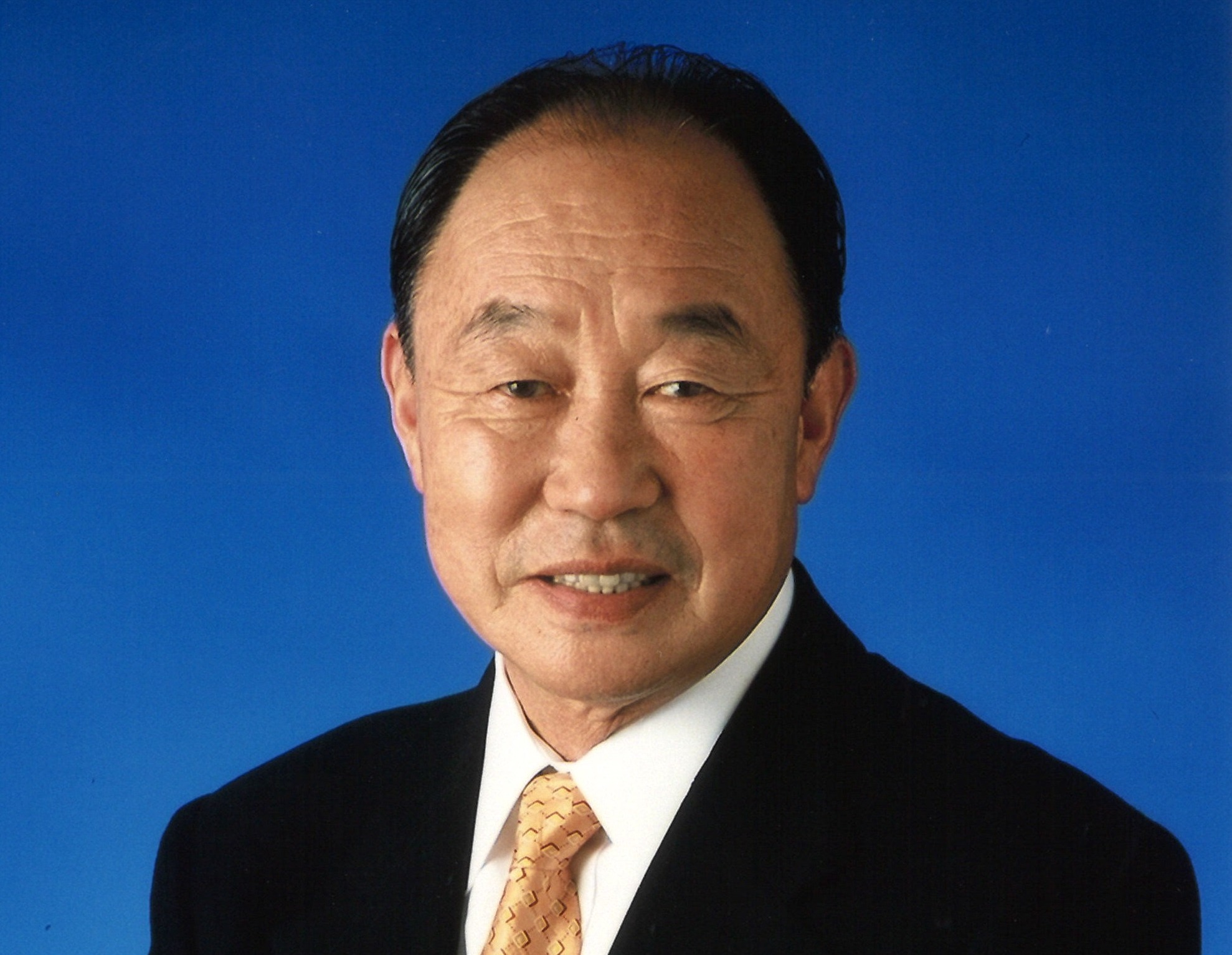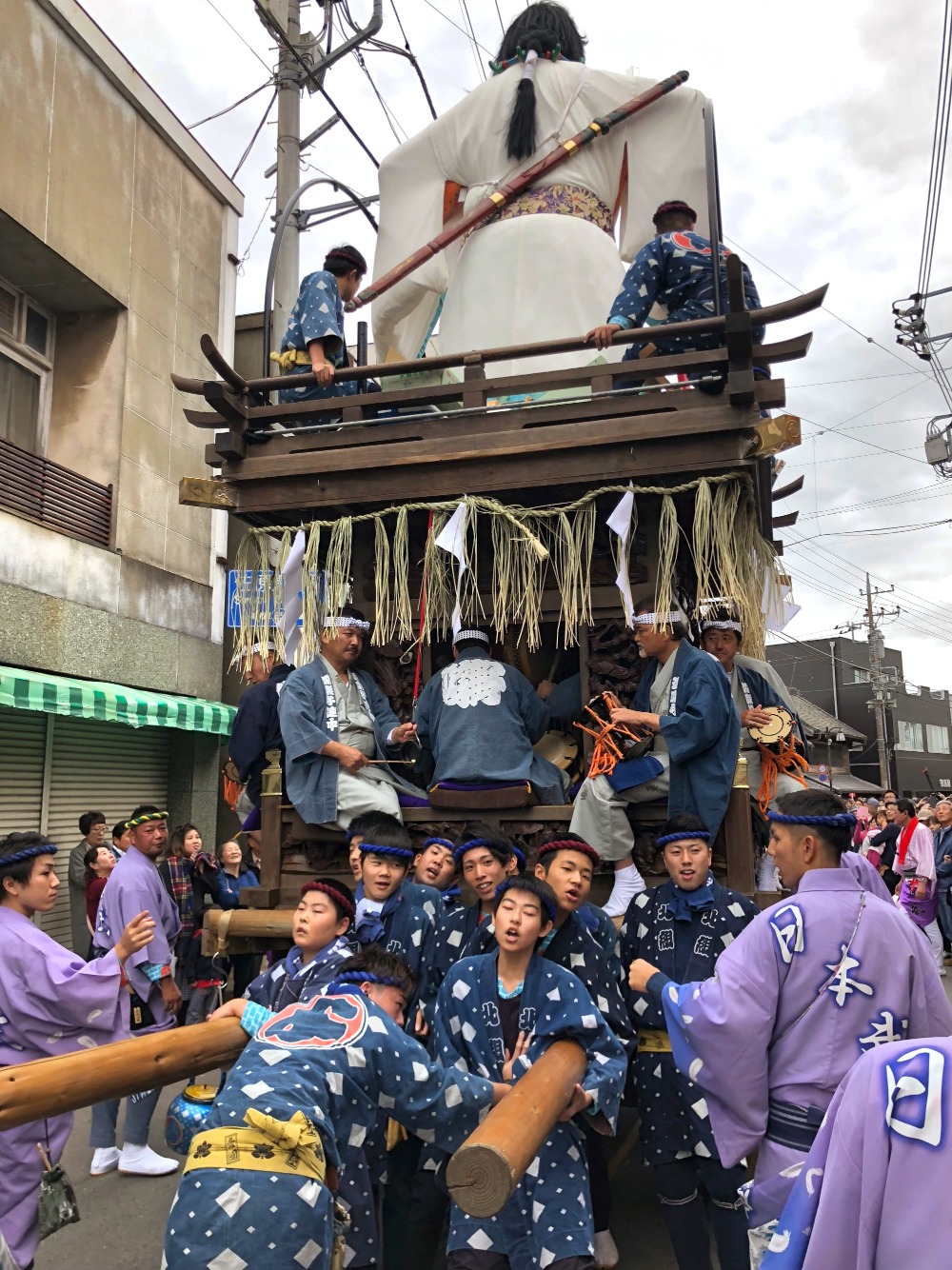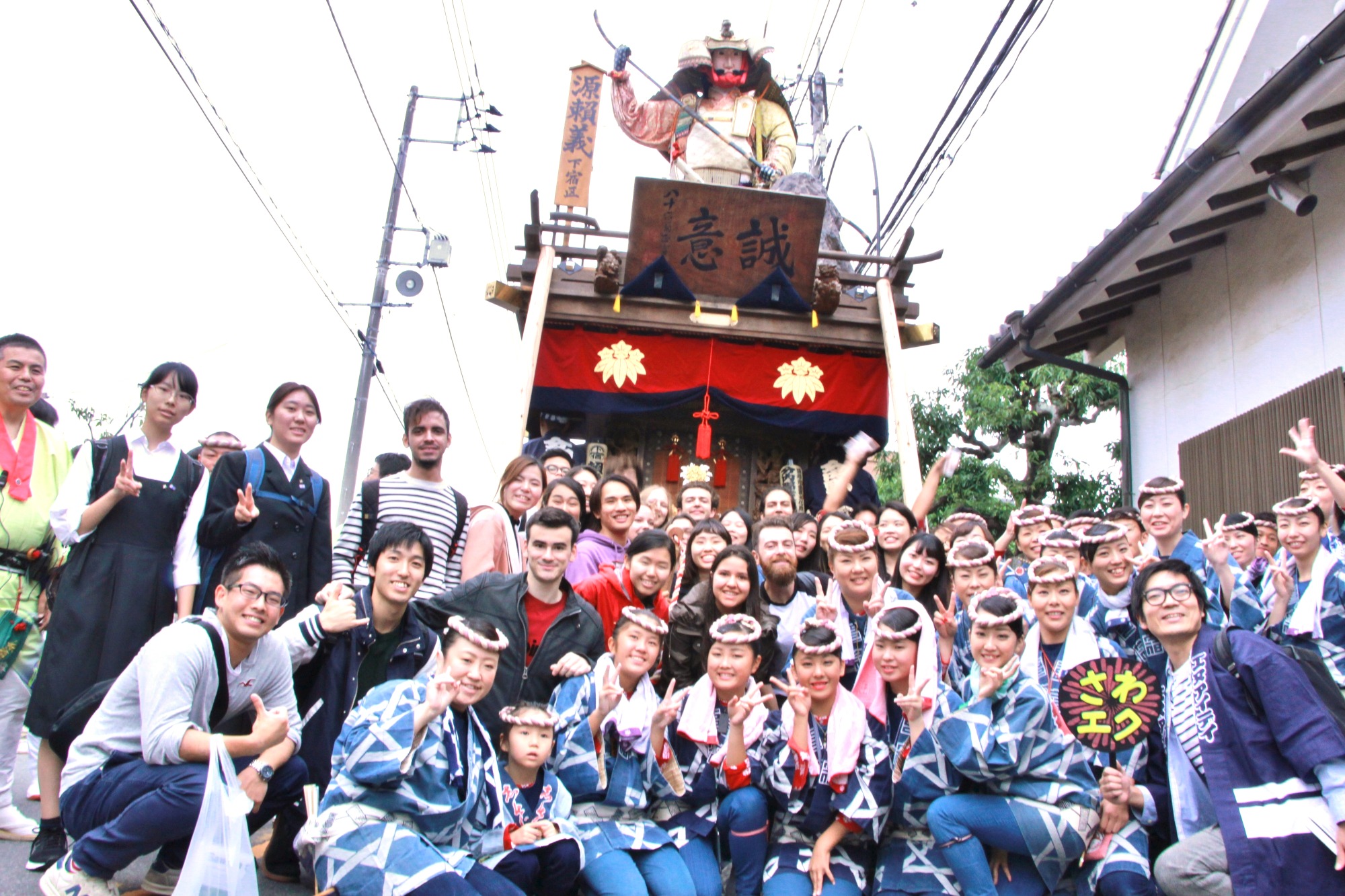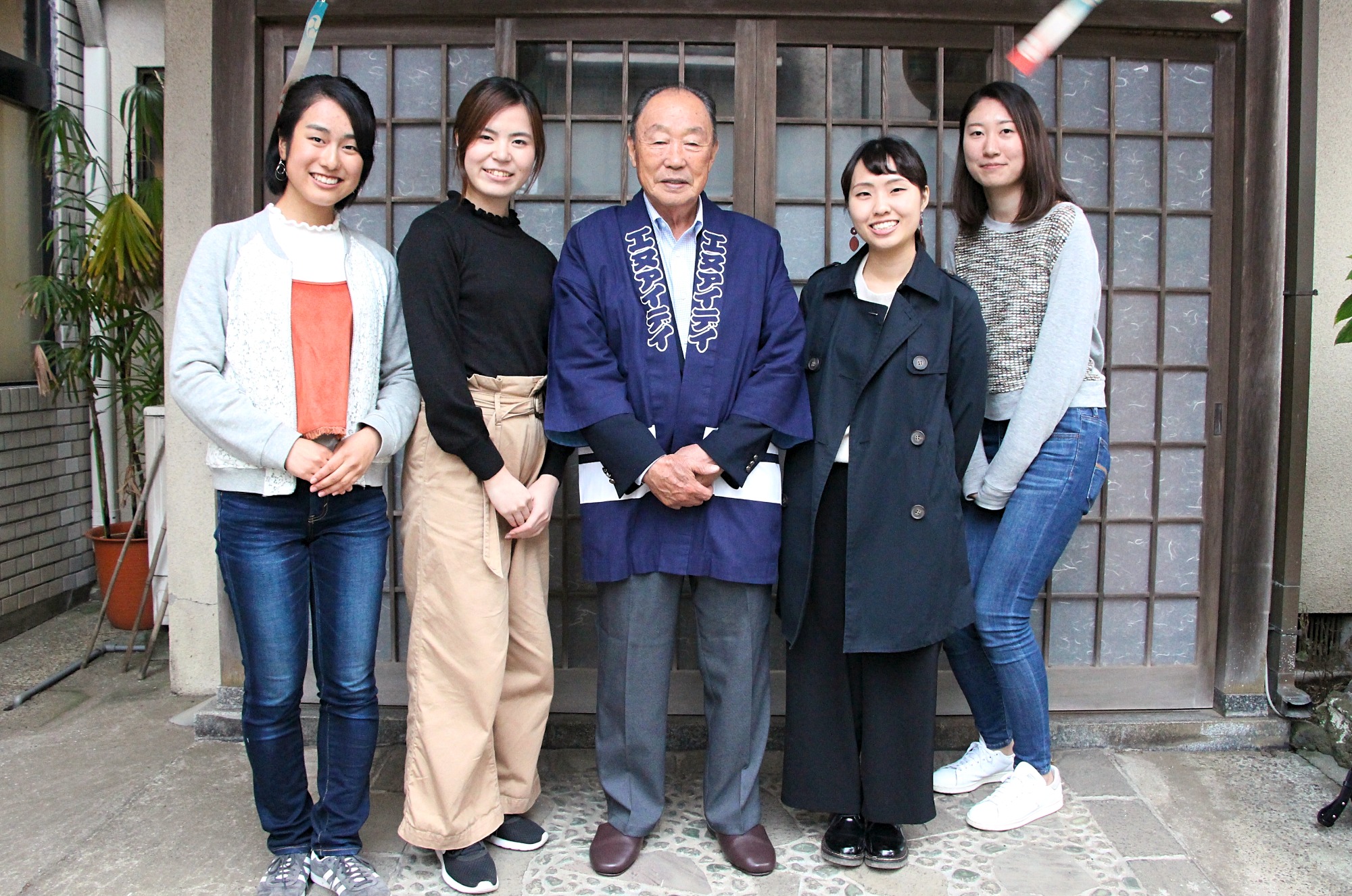Interview: NID Chairman & Top Advisor Mr. Kouichi Komori

――Sawara: Remnants of the Edo Period
Q1. We know that you are from Sawara, but could you tell us any memory or event in particular that stands out about Sawara’s former streetscape or atmosphere?
I was born in the 4th year of Showa (1934), and around 1941 when I was in elementary school the pacific war broke out, and in my sixth year of elementary school (1945) the war ended. I was not able to see the more prosperous times of Sawara, but Sawara used to be a very rich town. In the publication of the “Chiba Prefecture Millionaire Pages” printed in the 45th year of Meiji (1912) which listed the wealthy families of Chiba prefecture, at the top of the list were family names of Ozeki and Maegashira sumo wrestlers, who were rich families from Sawara. It might be hard now to imagine, but Sawara used to be a very wealthy town. A reason for this is because of its canals which were first used to transport rice, and then other products to Edo (old Tokyo). Rice products such as sake and soy sauce were also popular.
However, when I was growing up the ration system was already in place, and most business owners of the city’s main industries of rice, sake, and soy sauce had closed their doors, causing Sawara’s main industries to decline and its prosperity came to an end.
It happened when I was in 7th grade, I think. At that time, I loved Sawara’s festival, but as a lot of the young people who took part in the festival after the war had come home safely, things tended to get rough. Gradually Sawara’s festival became flashy and the floats began to be thought of as money-losers, and eventually the festival was labeled as one of Sawara’s three evils. The people of Sawara forgot the meaning of the festival, and the event became shunned by the locals. For someone like me who loved those festivals, I felt a sense of urgency and crisis that Sawara’s festival might disappear forever.
――Founding of NID
Q2. There was a lot of drama between Showa 45 and the founding of Keiyo Keisan Center until present. Please tell us about some of your hard times and memorable episodes as a business owner.
After the war ended, the American army suddenly came to our house in Sawara, and with no English skills to speak of, the only words I could make out was the name of my uncle, Kitagawa Sosuke. He had worked at IBM, and was known as one of the “7 Samurai” of IBM. They knew that he was in Sawara after the war, and they came from Yokota Base to take him back with them. This is how valuable people were who had computer experience in those days.
Afterwards, my cousins and relatives all worked in the company that my uncle founded, but I didn’t want to, so subsequently I did not work for his company. I was the only one who wasn’t working, and so everyone around me said “why don’t you make your own company in order to experience cooperating with everyone and building something?”. At this time, my cousin who was working at my uncle’s company quit and came back to Sawara, so I enlisted his help and started work in the IT field, building a company that used keypunchers to enter data. This company was the Keiyo Keisan Center which later became NID (Nippon Information Development Co., Ltd). At the time, we were at the frontier of our industry, and as there was little employment opportunity in Sawara, my cousin and I worked hard to revive Sawara’s industry. I realized that I couldn’t manage without another person to help cover mistakes while continuing forward.
After founding my company in 1970, and once things started to get on track, the yen became strong and exports to America dropped, and Japan went into recession. No matter where you went in Japan, there were no jobs, but as the responsibility of a business owner I had to pay my employees. Those were rough times. I’m not exaggerating when I say there were no jobs, to the point where I went out fishing while waiting for phone calls of jobs from Tokyo. There was finally a call from Tokyo with a job of punching questionnaire data into A3 sized paper, and so I brought my work home. There was a young woman, about 19 or 20, working at the office who had had no work for about six months, and she did a great job, working weekdays and weekends without taking a break, and as a result we made a large profit that year. After that, I had decided to close the business since we had made enough money, but my uncle’s company in Tokyo currently had no business and so we decided to merge. After merging the company changed its name to NID. Merging the two companies allowed me to enter into the Tokyo market, and also allowed my uncle to keep working. This was a time when software was starting to come around, and there weren’t that many people in the computer engineering field, which was good for us because at that time computer performance was poor and computer engineers had it hard in the sense they had to really use their brains and think hard to solve problems. However, now the field has expanded and is called “Iot” (internet of things), and computer engineers are considered a very important asset for NID.
――-Revival of Sawara Festival and Town
Q3. What initiative did you take in restarting the Sawara Festival and reinvigorating the town of Sawara?
I’ve loved festivals since I was young, and more than anything I loved the town of Sawara, and so I thought I wanted to change Sawara into a good, livable city. The first step I took was to study the history of the Sawara festival with three other friends. While we were digging through old documents, we found a document stating the passing down of the festival in the depths of Suwa Shrine. Suwa Shrine is a branch of the main Suwa Shrine in Nagano prefecture, and the branch was built in Sawara during the Heian Period (794-1185). The document was written in old Japanese, and on top of that the script was a medieval cursive, which we amateurs couldn’t translate in just one night. We asked the head priest of Suwa Shrine to make a copy of the documents, and asked professionals in the medieval document and festival fields to translate the manuscripts for us. However, we were told that it would take a minimum of two years to translate the scripts. These two years taught us a lot of about patience.
After the manuscripts were translated, we knew that Sawara Festival was the starting point for the city to begin anew. We knew this because holding the festival was a natural way for the community to come together. The Sawara Festival divides the town into smaller regions, and during the month before the festival, the regions compete with each other to make decorative dolls for the floats. This competition between regions to create these dolls is a source of communication within communities, and heightens the sense of rivalry to make the best decorations. These new friendships create a united and helping community, which generates a crime and disaster prevention network when exposing robbers, or alerting the area in the case of the flooding of the Ono river.
However, along with the decline of Sawara after the war, we feared that the Sawara Festival had drifted away from its original intent of “community making”, drawn out by the Ino Family. No one knew that this festival was connected to crime and disaster prevention. I wanted to revive the Sawara Festival in order to make everyone remember the original purpose of this festival.
Q4. What sorts of things did you do in order to restart the Sawara Festival?
Like I mentioned before, the fifteen, twenty years after the war, the Sawara Festival became a place full of alcohol and endless fighting, which is why the citizens of Sawara put a distance between themselves and the festival and made them lose sight of the value of the celebrations. I really had to use my wisdom in order to get the people who knew those times all too well involved in the revival of the festival. In order to get them to participate, we had to show them that the festival during those twenty years was a long way away from the original intent of the Sawara festival.
After discussing among the three of us, we came to the conclusion that since people don’t understand the value of the celebration since it’s free, charge money for tickets. This system is also in place for the other famous festivals, such as the Gion Festival in Kyoto, and the Chichibu Night Festival. There is a general belief that entrance to festivals should be free, and so we struggled to overturn this sort of common sense. At first we didn’t sell a single ticket. However, we thought that if the festival were to succeed once, the merit of the festival would expand quickly, and so we got citizens and companies involved to advertise, and somehow, we sold all the tickets. We were worried about the weather on the day of, but the gods were with us and the first comeback of the Sawara Festival ended it huge success, and people realized that the festival was worth paying for.
Behind its success lies the citizens of Sawara who were involved in bringing back the festival, and the employees of NID who helped clean up after the festivities ended, and everyone else who was involved. The following year, tickets sold out in three hours, and even local residents couldn’t get a ticket, which I believe shows how the increase of people who understand the importance of the festival. This change in thought is captured in the visible change of the Sawara Festival being designated as a National Important Intangible Cultural Asset in 2004, and in 2016 it was designated as a UNESCO Intangible Cultural Heritage.

(Sawara Festival)
Q5. In bringing back the Sawara Festival, you took into consideration the ideas of the Ino Family. Tadataka Ino was connected to Sawara, but how did his thinking influence the building of the town?
Tadataka’s ideas were very important when thinking about urban planning of Sawara. In his youth, there was no leader of the town, and so he said that “if there is no leader, we shall rule by ourselves”, and he came to the front and took responsibility for leading the town. This mentality is still seen in Sawara today, where citizens take the reigns and redevelop the town on their own volition.
In regards to myself, the more I research and learn about Tadataka, it seems he was very rich in spirit and equipped with a kind heart towards others. There is a saying of Tadataka’s that demonstrates this very well: “If the region doesn’t improve, neither will I”. He always valued having a kind heart, which must mean that he believed the region where he lived should be wealthy and easy to live. He worked hard to lead the town, but also to make rich the hearts of himself and Sawara’s citizens. The wealth of the town is linked to the richness of the hearts of its citizens, and if one doesn’t have a rich heart like that of Tadataka, it’s not possible to build a wealthy town. This concept is very important when redeveloping a town.
――-Chairman Komori's Ideals
Q6. Please tell us what you consider important when doing business and in transforming Sawara.
I think it’s “people”. Placing importance on and trusting people is imperative above everything else. When I was the President of NID, I placed trust in my employees and entrusted work to them. I didn’t say anything until I was asked to. I wanted them to think and act for themselves, and I believed in them. As a result, they grew and became important assets for the company. Thanks to them, the range of activities of NID further expanded.
As I talked about before, when I was President of Keiyo Keisan Center, there was a period of time when there was no work at all. Luckily, work came fluttering in, and our employees said that they will make up for the lost work, and they worked weekends and holidays to finish the project, and thanks to their efforts we made a large sum of money. A company is nothing without “people”, and can’t perform well without people. A business also cannot overcome the hard times without its employees, just like redeveloping a town. When I was in a rough, it was always people who were helping me, which is why I value people no matter what the circumstance.
“Patience” and “performance” are also important elements. Talking about patience, in the past I started a number of my own companies, but all of them were in the red for about six years each, but I believed that one day they would come around into the black. I persevered, and in the seventh year I was in the black. Be patient and don’t give up, even in hard times; it’s important to keep putting in effort. In regards to “performance”, there’s an example about the Ono river. Ono river is one of the main tourist attractions of Sawara, but before it was full of garbage. There were even several old bicycles that had sunk into the river. Myself and about twenty or thirty other volunteers came together to clean up the river and restore its beauty. In the beginning, local residents looked at us with a cold look, thinking “here they go again doing something weird”, but as the river got cleaner day by day, ships finally passed through the waterway for the first time in forty years. Weeping willows were planted alongside the river banks, improving the scenery, and even changing the residents. Up until then, people had unthinkingly thrown garbage into the river, but now when they saw another littering the river, they warned each other not to. The reason why they warned others is because they saw us cleaning and beautifying the river, and they didn’t want others dirtying their clean river. People are always looking at your efforts, and one day they will start to cooperate with you. This is why I believe showing others that you’re working hard and making an effort is important and will pay off in situations such as in business and town redevelopment.

(At the 4th Sawara Experience)
My ideal image is to create a higher-quality sidewalk space. A space where the children of people who left Sawara and who came back to visit can play in a safe environment. Just like the words of Tadataka, “If the region doesn’t improve, neither will I”, suggesting that if the town improves its citizens will become wealthier. I love the town of Sawara, which is why I want to improve the quality of the town and improve the richness of its citizens’ hearts and minds, and for people to love their town just like I do.

(Chairman Komori (center) and APIC interns)
Sawara Chamber of Commerce Auditor. NID Chairman & Top Advisor. Driving force behind Sawara revival, starting with the Sawara Festival. Executive Committee President of the first-generation Sawara Festival. President of Board of Directors of Sawara Festival revival.
(As of January, 2019)
WHAT'S NEW
- 2024.12.4 UPDATE
PROJECTS
"Barbados A Walk Through History Part 14"
- 2024.9.17 UPDATE
PROJECTS
"Barbados A Walk Through History Part 13"
- 2024.7.30 UPDATE
EVENTS
"408th Lecture Meeting Regarding Global Issues"
- 2024.7.23 UPDATE
PROJECTS
"Barbados A Walk Through History Part 12"
- 2024.7.9 UPDATE
ABOUT
"GREETINGS FROM THE PRESIDENT JULY 2024"
- 2024.7.4 UPDATE
EVENTS
"APIC Supports 2024 Japanese Speech Contest in Jamaica"
- 2024.6.27 UPDATE
EVENTS
"407th Lecture Meeting Regarding Global Issues"
- 2024.5.21 UPDATE
EVENTS
"406th Lecture Meeting Regarding Global Issues"
- 2024.5.14 UPDATE
EVENTS
"405th Lecture Meeting Regarding Global Issues"
- 2024.4.2 UPDATE
PROJECTS
"Water Tanks Donated to Island of Wonei, Chuuk, FSM"




